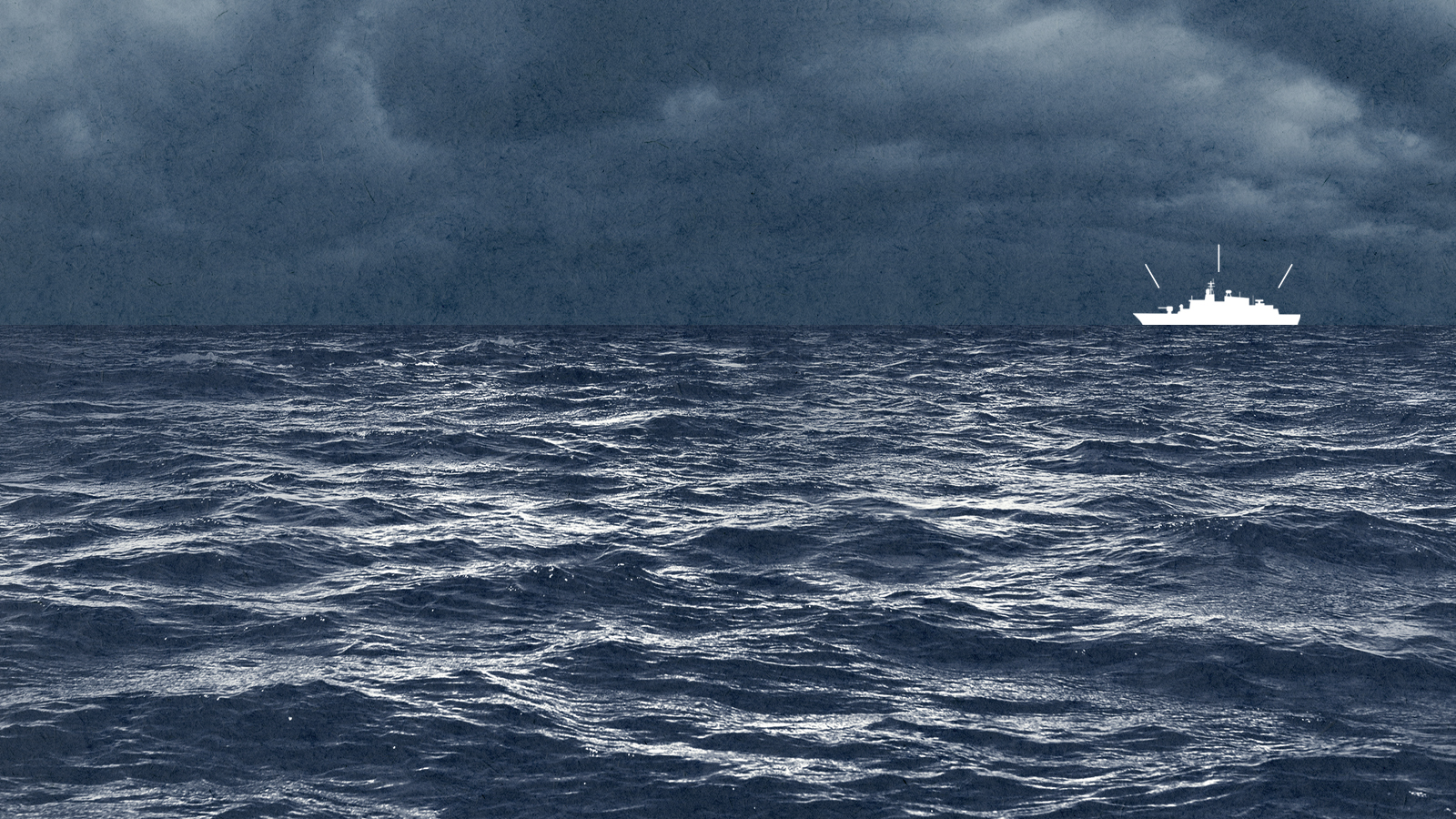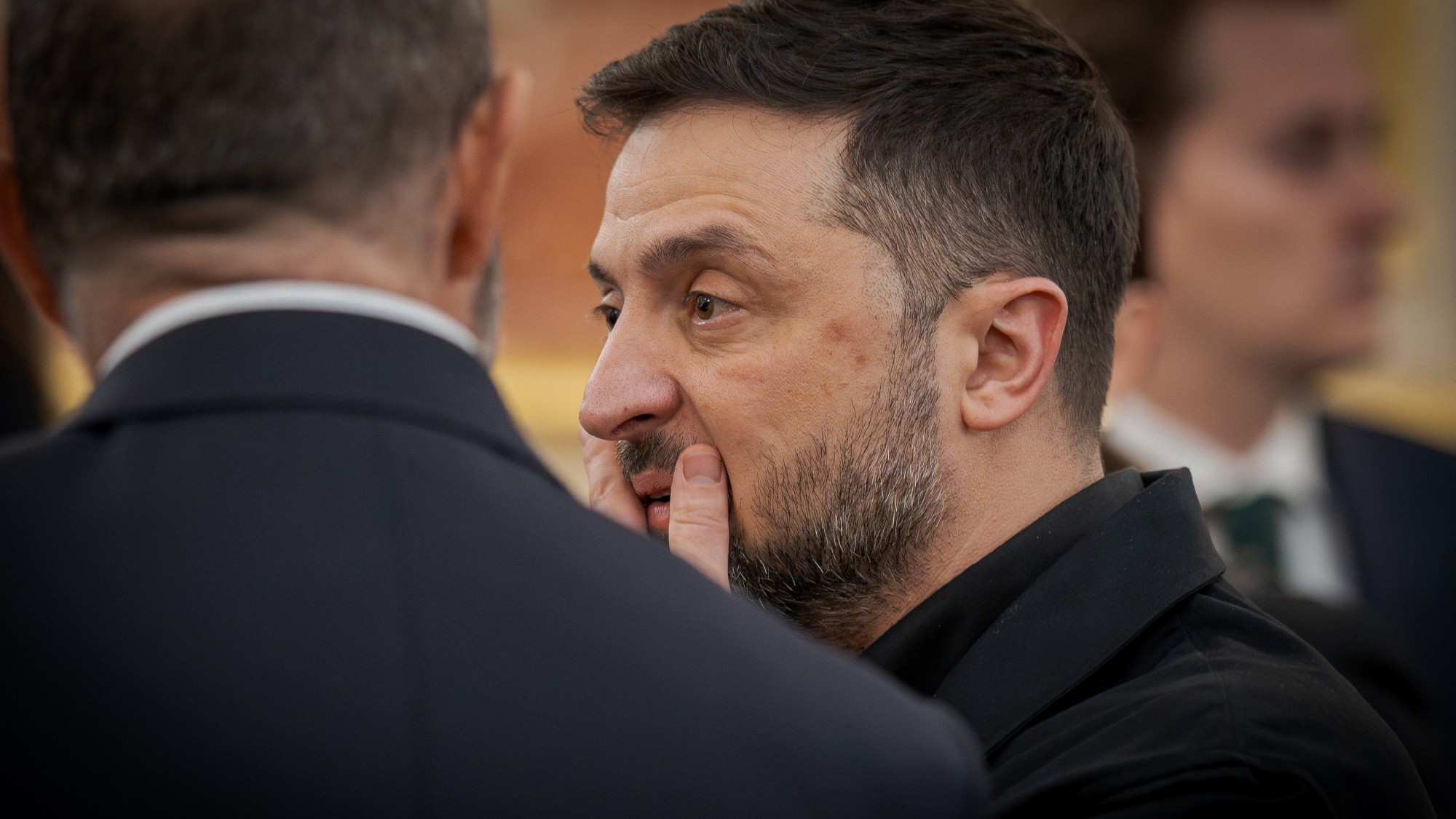The sinking of Russia's flagship might be a bad sign for the U.S. Navy


It's tempting for Americans to get smug about the sinking of the Moskva, the Russian Navy's flagship in the Black Sea. Whether it was destroyed by Ukrainians or — less plausibly — sunk because of a non-combat onboard explosion of ammunition, the result is both a humiliation and a setback for Vladimir Putin's war efforts. If you're cheering Ukraine's defenders, it's hard not to take some satisfaction in that.
But America's fleet might also be more vulnerable than you think.
For several years now, going back to a pair of collisions separately involving the U.S.S. John S. McCain and U.S.S. Fitzgerald in 2017, there have been a series of reports indicating that the U.S. Navy is overstretched, overworked, and under-maintained, and thus increasingly vulnerable as it goes about the expensive task of patrolling the world's oceans.
The Week
Escape your echo chamber. Get the facts behind the news, plus analysis from multiple perspectives.

Sign up for The Week's Free Newsletters
From our morning news briefing to a weekly Good News Newsletter, get the best of The Week delivered directly to your inbox.
From our morning news briefing to a weekly Good News Newsletter, get the best of The Week delivered directly to your inbox.
A February report by the Government Accountability Office broke down the ugly details of how Navy personnel are struggling to keep their ships running properly. "Some crewmembers provided examples of parts such as electrical safety equipment being on backorder for up to 2 years and described difficulties locating consumable materials such as filters, specific types of oil, and protective clothing for themselves," the GAO reported. "Ten of the 16 ships' crews we met with stated that they resorted to cannibalizing parts — that is, taking functional parts away from other ships, in turn leaving them less-than-operational — so their respective ships could remain operational."
America might have what is regarded as the most powerful navy in the world — China has the largest, but many of its ships are smaller — but it is clearly fragile. And that's a problem.
"The U.S. Navy is on the verge of strategic bankruptcy," Christopher Dougherty, a former assistant defense secretary, wrote last year. "Its fleet isn't large enough to meet global day-to-day demands for naval forces. Due to repeated deployments and maintenance backlogs, the fleet also isn't ready enough to meet these demands safely, nor can it quickly surge in an emergency." He concluded that "the risk of its debts coming due suddenly (and perhaps violently) will increase."
Even without those challenges, there is also the question of whether the U.S. Navy is built for the modern world.
A free daily email with the biggest news stories of the day – and the best features from TheWeek.com
Just as aircraft carriers once replaced battleships as the backbone of the fleet, there are now questions about whether America's carrier-based fleet is overly vulnerable to a new generation of Chinese anti-ship ballistic missiles. And those questions are likely to get more pertinent if it turns out the Ukrainians really did take out the Moskva with their new Neptune missile.
America has spent much of the 21st century learning that the overwhelming power of its armed forces isn't always so overwhelming. The sinking of the Moskva is a sign that such a lesson might also extend to the U.S. Navy. Finding out the hard way might be disastrous.
Joel Mathis is a writer with 30 years of newspaper and online journalism experience. His work also regularly appears in National Geographic and The Kansas City Star. His awards include best online commentary at the Online News Association and (twice) at the City and Regional Magazine Association.
-
 Crossword: December 30, 2025
Crossword: December 30, 2025The daily crossword from The Week
-
 What have Trump’s Mar-a-Lago summits achieved?
What have Trump’s Mar-a-Lago summits achieved?Today’s big question Zelenskyy and Netanyahu meet the president in his Palm Beach ‘Winter White House’
-
 The most anticipated movies of 2026
The most anticipated movies of 2026The Week Recommends If the trailers are anything to go by, film buffs are in for a treat
-
 Did Trump just end the US-Europe alliance?
Did Trump just end the US-Europe alliance?Today's Big Question New US national security policy drops ‘grenade’ on Europe and should serve as ‘the mother of all wake-up calls’
-
 Is conscription the answer to Europe’s security woes?
Is conscription the answer to Europe’s security woes?Today's Big Question How best to boost troop numbers to deal with Russian threat is ‘prompting fierce and soul-searching debates’
-
 Trump peace deal: an offer Zelenskyy can’t refuse?
Trump peace deal: an offer Zelenskyy can’t refuse?Today’s Big Question ‘Unpalatable’ US plan may strengthen embattled Ukrainian president at home
-
 Vladimir Putin’s ‘nuclear tsunami’ missile
Vladimir Putin’s ‘nuclear tsunami’ missileThe Explainer Russian president has boasted that there is no way to intercept the new weapon
-
 The Baltic ‘bog belt’ plan to protect Europe from Russia
The Baltic ‘bog belt’ plan to protect Europe from RussiaUnder the Radar Reviving lost wetland on Nato’s eastern flank would fuse ‘two European priorities that increasingly compete for attention and funding: defence and climate’
-
 How should Nato respond to Putin’s incursions?
How should Nato respond to Putin’s incursions?Today’s big question Russia has breached Nato airspace regularly this month, and nations are primed to respond
-
 Russia’s war games and the threat to Nato
Russia’s war games and the threat to NatoIn depth Incursion into Poland and Zapad 2025 exercises seen as a test for Europe
-
 The mission to demine Ukraine
The mission to demine UkraineThe Explainer An estimated quarter of the nation – an area the size of England – is contaminated with landmines and unexploded shells from the war
